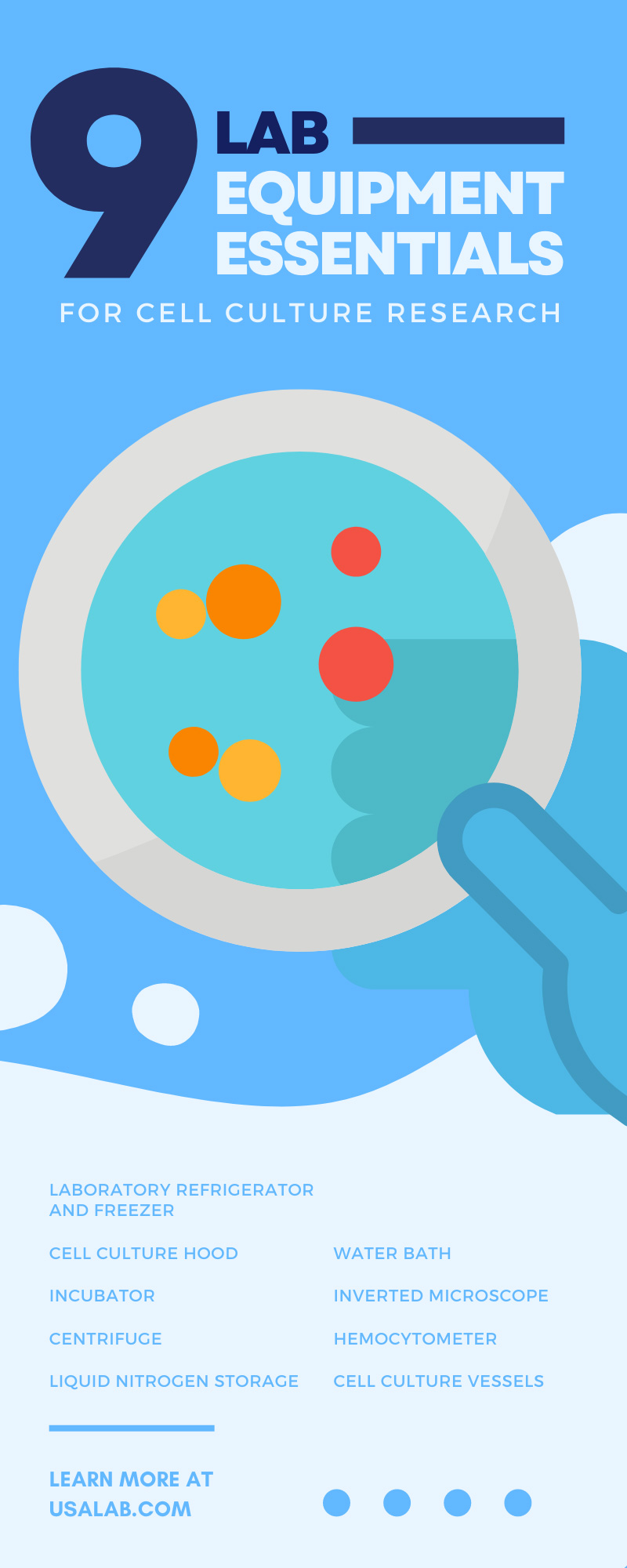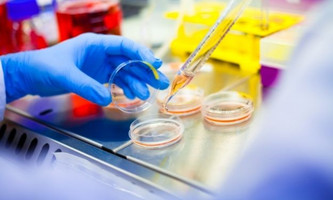Cell Culture Lab Research Equipment List
Posted by USA Lab Equipment on Dec 15th 2021
No laboratory space would be complete without the right instruments and equipment on deck. Having all the right tools on hand is essential to maintaining an effective workflow and efficient lab schedule. Especially for a delicate process like cell culture research, you want to make sure your lab is outfitted with the right tools for the job. Before you start experimenting, make sure you have these nine lab research equipment essentials for cell culture research. Here is a concise cell culture equipment list for your laboratory.
What Does Cell Culture Research Involve?
Cell culture research is the practice of growing and monitoring the growth of microorganisms in a laboratory setting. Cell culture research is useful in medical laboratories to diagnose infections and test drugs; however, this practice can be useful to a variety of laboratory researchers. This is why you should feature the proper cell culture research equipment in your own laboratory. Keep reading below to find a full list of the most essential cell culture equipment to include in your laboratory.
Cell Culture Hood
Much like a fume hood helps control safety in experiments dealing with chemicals, cell culture hoods promote safety and cleanliness in cell culture experiments. In these laboratory environments, cleanliness is extremely important to avoid contaminating materials and experiments. Laminar-flow hoods help accomplish this by preventing airborne contaminants from entering the workstation. Biosafety cabinets like these offer various levels of protection for the materials and user through a Class I, Class II, and Class III range. Depending on the cell culture research you conduct and what microorganisms you’re working with, different levels of protection will be necessary.
Incubator
In order to observe and test cell cultures, you need a suitable chamber that will promote cell growth. This is where an incubator comes in. The incubator provides a controlled environment with the proper growth conditions for the specific cells you’re working with. You can control the temperature inside the incubator to test different cell cultures and specimens. Incubators also offer adjustable humidity levels and CO2 levels for full control over the growing environment.
Centrifuge
The centrifuge is a device that separates liquid particles based on size, density, and viscosity. Differences in rotor speed can also change the outcome of the separation. These machines use gravitational force and centrifugal force to separate these particles. This is where the device gets its name. You can find centrifuges in a wide variety of sizes, models, and specifications. For example, the angle of the rotor type and the angle at which it holds test tubes in place may be more effective for some experiments than for others. Cell culture research requires centrifuges for separating suspended cells during various culture stages.
Laboratory Refrigerator and Freezer
Storage is extremely important in a cell culture laboratory. Every instrument, tool, and specimen has its place in storage to stay controlled and protected. You can store general tools and instruments like glassware and plastics at room temperature, but chemicals, materials, and specimens must always be stored at specific temperatures according to their labels. A laboratory chest freezer is a great way to store specimens conveniently on hand in your lab.
Cell culture media and reagents have very specific temperature requirements that require the use of laboratory refrigeration and freezing. For example, some media and reagents require storage at about 35 degrees Fahrenheit or 2-8 degrees Celsius. However, most reagents require a temperature as low as negative 5 degrees Celsius. Make sure to always read your material labels closely for requirements.
Liquid Nitrogen Storage
When you need even colder temperatures for long-term storage options for cells, use a liquid nitrogen freezer tank. Liquid nitrogen freezers or cryogenic storage options allow you to protect cells from the genetic instability that occurs over time. By freezing them in the liquid nitrogen tank, you can preserve cells for longer periods of time than they would last in the refrigerator or standard freezer. Depending on the types of specimens you’re working with, you may need either a vapor phase or liquid phase nitrogen storage chamber. For any biohazardous materials, a vapor phase system is required.
Water Bath
On the other hand, when you need to pre-warm a specimen or medium before use, you’ll need a water bath in the lab. Lab technicians commonly use water baths in cell culture research to successfully thaw frozen cells and reagents for use in experiments.
Inverted Microscope
Now that your laboratory is equipped with the proper safety, holding, and storage materials, you need more instruments for observing cell cultures. The inverted microscope is a crucial piece of equipment in any cell culture studies. This microscope helps the lab technician monitor cell morphology, such as a cell’s shape, structure, form, and size. The microscope also allows you to count cells, identify growth progress, and catch signs of contamination.
Hemocytometer
The hemocytometer is another crucial tool for monitoring cell cultures. A hemocytometer aids in counting the number of cells and helps determine cell concentration. Manually counting cells can take time and leaves room for error, where the automated cell counting device can help your experiments be more accurate, efficient, and successful.
Cell Culture Equipment List
Cell culture vessels are a collection of high-grade plastic containers that are suitable for cell culture use. This plasticware comes in a variety of sizes, shapes, and specifications that you need for your experiments. Depending on the application, you may need a different vessel. For example, a flask, a plate, and a pipette will all have different uses and applications. These may also include consumables, which are single-use plastics that are sterile and controlled for transporting cultures. Plus, using consumables in the lab space eliminates some of the cleaning and sterilization procedures, which can make your workflow more efficient overall.
Now that you know the nine lab equipment essentials for cell culture research, start stocking your laboratory for all the experiments to come. And if you’re looking for a source for these different tools, check out our lineup at USA Lab Equipment. Here you’ll find quality laboratory equipment like refrigerators and freezers, chillers, heaters, glassware, and so much more. Make sure your lab has only the best top-quality equipment before you start your delicate cell culture research projects.


